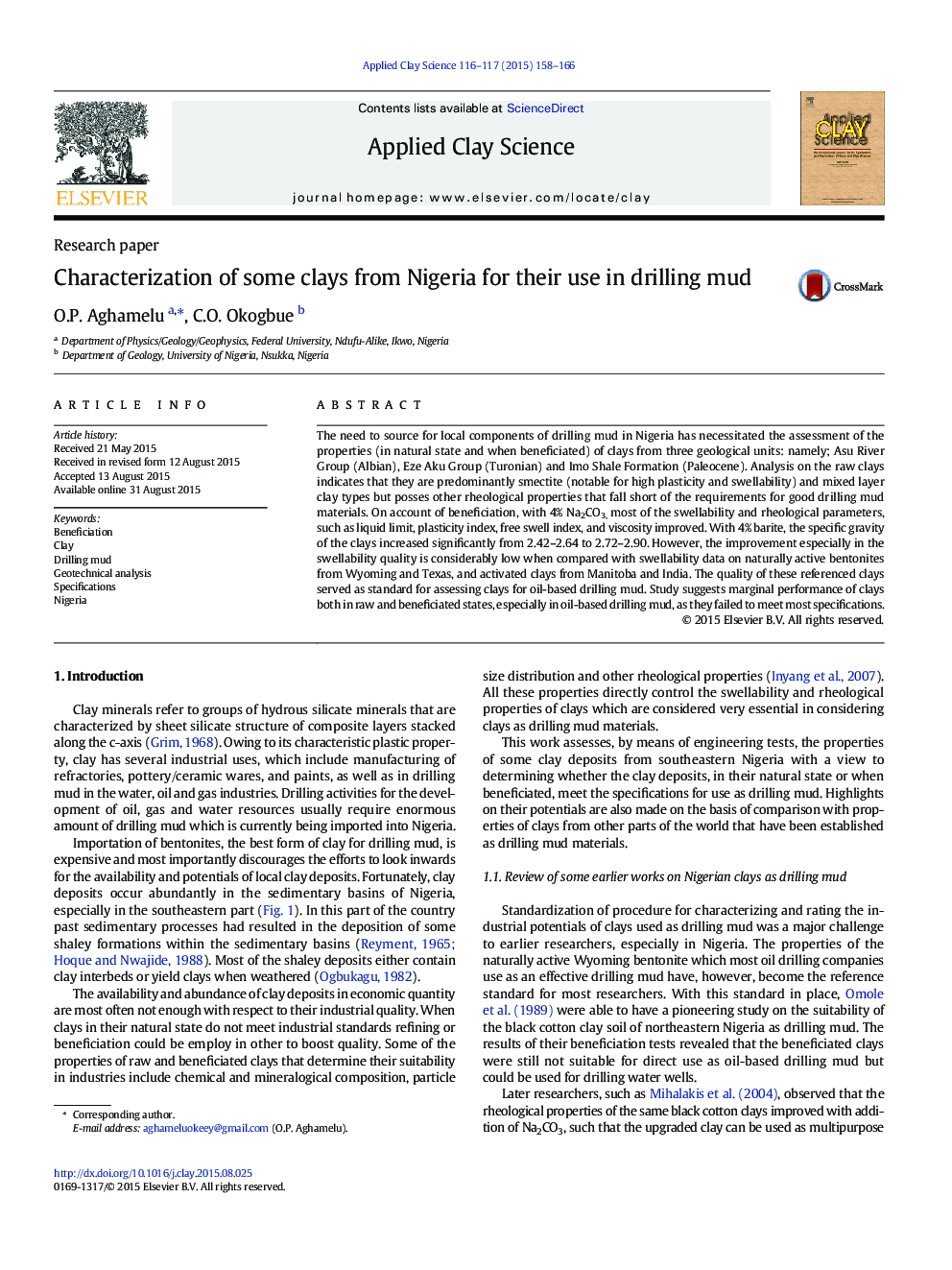| Article ID | Journal | Published Year | Pages | File Type |
|---|---|---|---|---|
| 1694472 | Applied Clay Science | 2015 | 9 Pages |
Abstract
The need to source for local components of drilling mud in Nigeria has necessitated the assessment of the properties (in natural state and when beneficiated) of clays from three geological units: namely; Asu River Group (Albian), Eze Aku Group (Turonian) and Imo Shale Formation (Paleocene). Analysis on the raw clays indicates that they are predominantly smectite (notable for high plasticity and swellability) and mixed layer clay types but posses other rheological properties that fall short of the requirements for good drilling mud materials. On account of beneficiation, with 4% Na2CO3, most of the swellability and rheological parameters, such as liquid limit, plasticity index, free swell index, and viscosity improved. With 4% barite, the specific gravity of the clays increased significantly from 2.42-2.64 to 2.72-2.90. However, the improvement especially in the swellability quality is considerably low when compared with swellability data on naturally active bentonites from Wyoming and Texas, and activated clays from Manitoba and India. The quality of these referenced clays served as standard for assessing clays for oil-based drilling mud. Study suggests marginal performance of clays both in raw and beneficiated states, especially in oil-based drilling mud, as they failed to meet most specifications.
Related Topics
Physical Sciences and Engineering
Earth and Planetary Sciences
Geochemistry and Petrology
Authors
O.P. Aghamelu, C.O. Okogbue,
